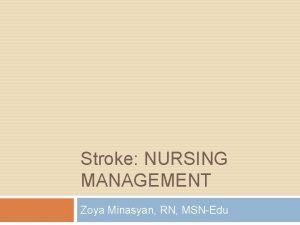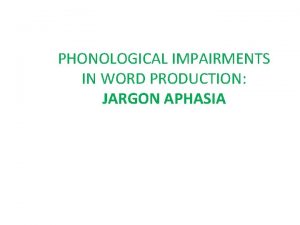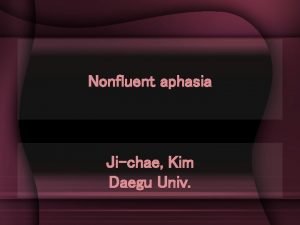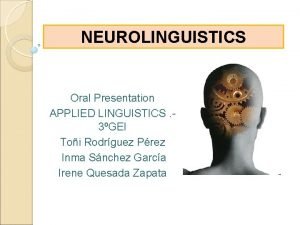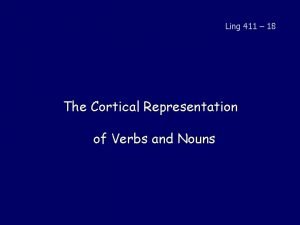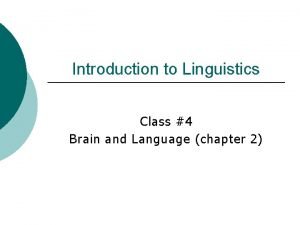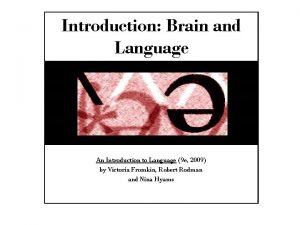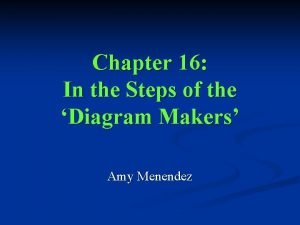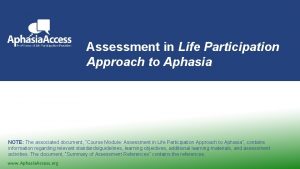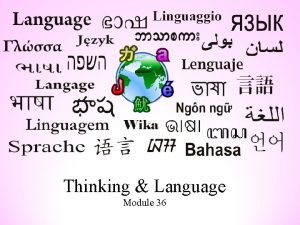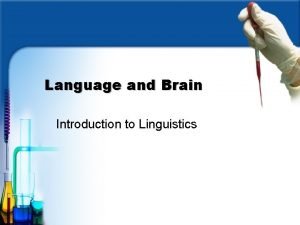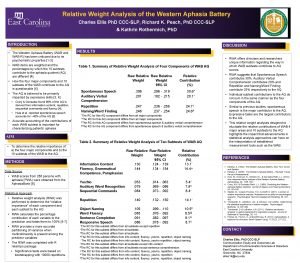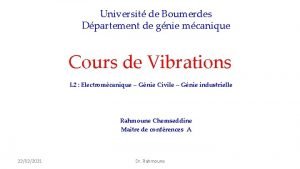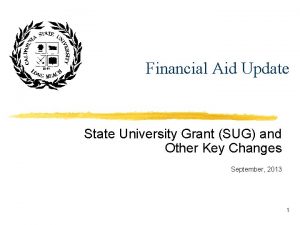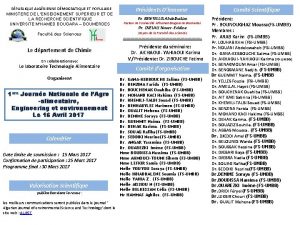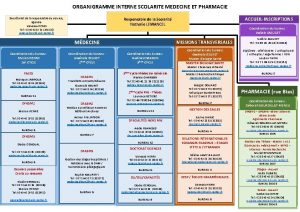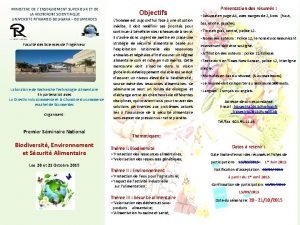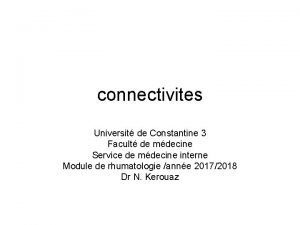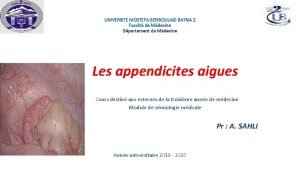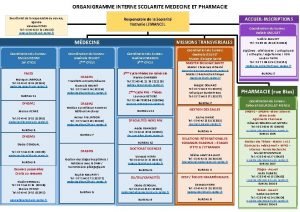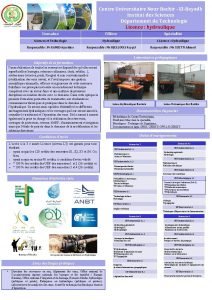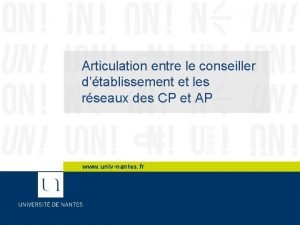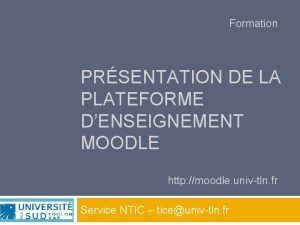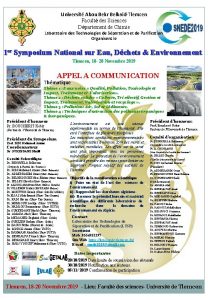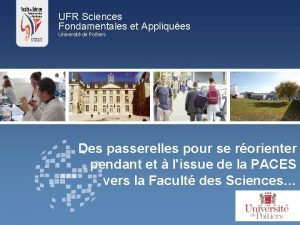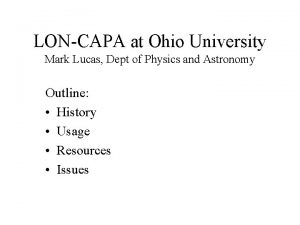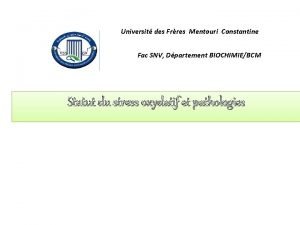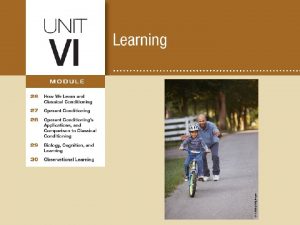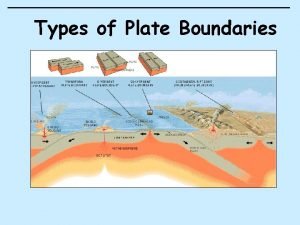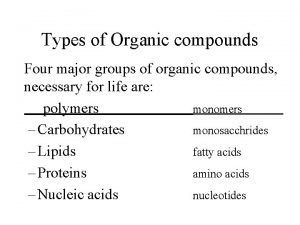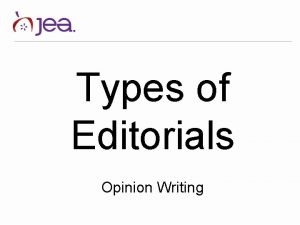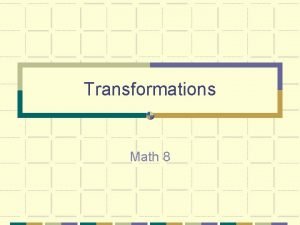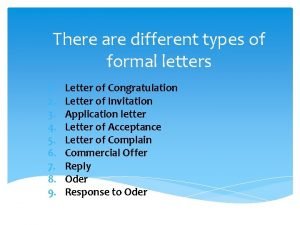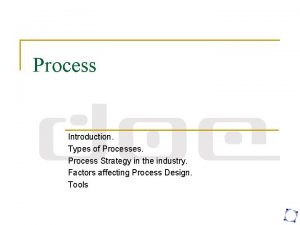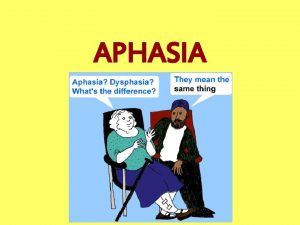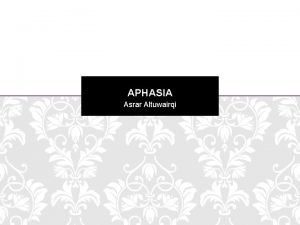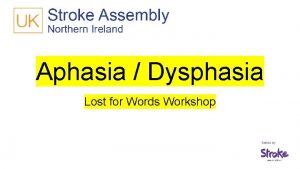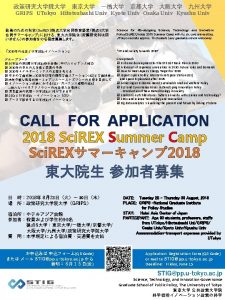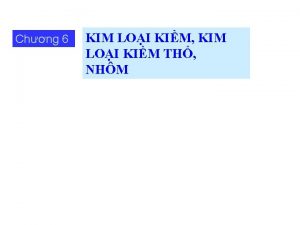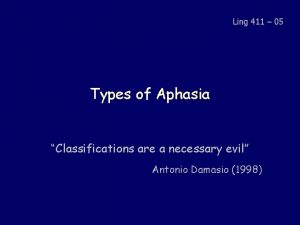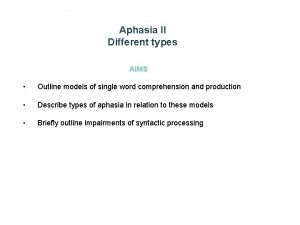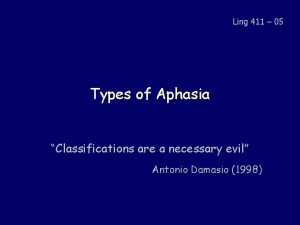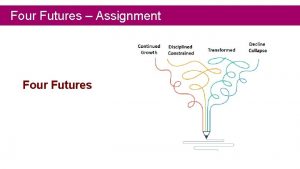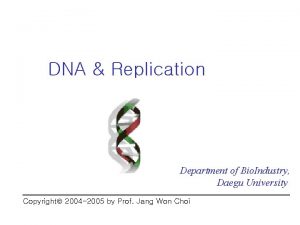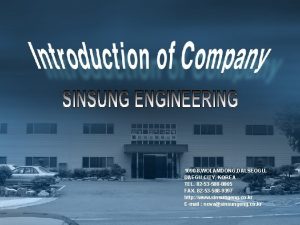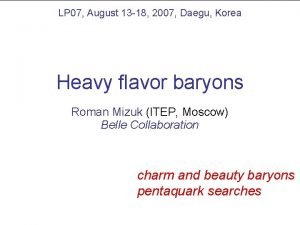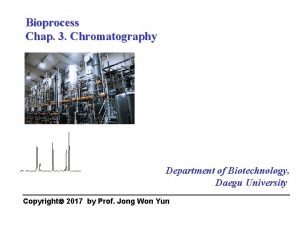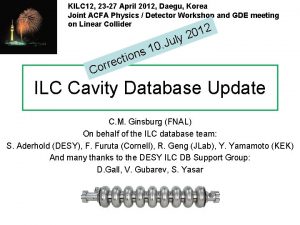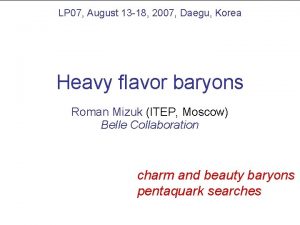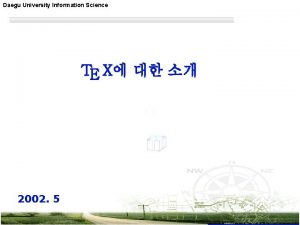Nonfluent aphasia Jichae Kim Daegu Univ Four types

























































- Slides: 57

Nonfluent aphasia Ji-chae, Kim Daegu Univ.

Four types of Nonfluent aphasia Broca’s Aphasia Trascortical Motor Aphasia Nonfluent aphasia Transcortical Mixed Aphasia Global Aphasia

Broca’s Aphasia • Neuroanatomical Bases of Broca’s aphasia – Broca’s area • Brodman’s map No. 44, 45 뒤쪽

Broca’s Aphasia • General Characteristics of Broca’s aphasia – Right-side (contralateral) hemiplegia, hemiparesis • Wernicke’s ahasia보다 구별하기 쉬움 • Descending pyramidal tract의 손상 • 오른쪽 신체 및 얼굴 근육의 약증 • Wheelchair에 의존헤 처음으로 방문 • 다리나 발 근육의 기능이 손, 파의 기능보다 빨리 회복



















Transcortical Motor Aphasia • 명칭 – 초피질 운동 실어증 – 연결피질 운동성 실어증 – TMA, TCMA – Isolated aphasia(isolation aphasia) – dynamic aphasia – Extrasylvian aphasic syndome

Transcortical Motor Aphasia • Neuroanatomical Bases of TMA – anterior superior frontal lobe • 브로카 영역 바깥쪽 • Deep portions of the left frontal lobe – association pathway • Perisylvian 영역과 다른 대뇌 영역을 연결

Transcortical Motor Aphasia • Neuroanatomical Bases of TMA – supplemental motor area의 손상 • Left hemisphere의 premotor area의 일부 • Speech mechanism을 시작하는 역할 – speech initiation의 손상 • 동작을 수행하기 이전에 motor subroutine을 계획 함 – 말하기의 손상이 충동이나 의도의 손상으로 인한 것이 아니라 운동 실행을 계획하고 프로그램하는데 문제

Transcortical Motor Aphasia

Transcortical Motor Aphasia • Neuroanatomical Bases of TMA – middle cerebral artery와 anterior cerebral artery가 갈라지는 가지(분지)












Mixed Transcortical Aphasia • 명칭 – Mixed transcotical aphasia – Isolated aphasia • Nonfluent aphasia – Global aphasia와 유사 – 따라말하기 기술이 보존

Mixed Transcortical Aphasia • Neuroanatomical Bases of MTA – 혈중산소감소(hypoxia): 대뇌 혈관의 혈류 감소 – 심장 마비(cardiac arrest) – 대뇌 부종(cerebral edema) – 다중 색전증(multiple embolic stroke) – Cerebral border zone • Watershed area: MCA, ACA, PCA 분기점



Mixed Transcortical Aphasia • Major Language Characteristics of MTA – 극단적으로 제한된 자발어(spontaneous speech) – 반향허(echolalia) : 3 -4어문, 무의미 음절, 외국어 – 문장 완성하기 – 중증의 유창성 손상 – 중증의 청각적 이해력(auditory comprehension) 손상










Global Aphasia • Major Langauge characteristics of Global Aphasia – 중증의 유창성 손상 – 극단적으로 제한된 구어 표현 • Verbal stereo type • Perseveration (보속증) • 산출 단어도 거의 인식 불가 – 따라말하기(repetition) 손상




 Pe.daegu.ac.kr
Pe.daegu.ac.kr Daegu gwangju
Daegu gwangju Broca's aphasia
Broca's aphasia Zoya minasyan
Zoya minasyan Aphasia meaning
Aphasia meaning Jargon aphasia example
Jargon aphasia example Global aphasia
Global aphasia Conduction aphasia
Conduction aphasia Examples of aphasia
Examples of aphasia Wernicke’s area function
Wernicke’s area function Examples of aphasia
Examples of aphasia Conduction aphasia
Conduction aphasia Aphasia definition
Aphasia definition Pico question examples aphasia
Pico question examples aphasia Decussate
Decussate Life participation approach to aphasia
Life participation approach to aphasia Aphasia pathfinder
Aphasia pathfinder Expressive aphasia
Expressive aphasia Aphasia
Aphasia Broca's aphasia
Broca's aphasia Expressive aphasia
Expressive aphasia Relative weight analysis
Relative weight analysis Gabby giffords aphasia
Gabby giffords aphasia Uta maverick activity center
Uta maverick activity center Logo université constantine 3
Logo université constantine 3 Ch rahmoune
Ch rahmoune State univ grant - sug ug
State univ grant - sug ug Umbb inim
Umbb inim Celcat univ nantes
Celcat univ nantes Fs univ umbb
Fs univ umbb Univ constantine 3
Univ constantine 3 Pharmacie univ batna 2
Pharmacie univ batna 2 Celcat univ nantes medecine
Celcat univ nantes medecine Université elbayadh
Université elbayadh Prodoc univ nantes
Prodoc univ nantes Univ prof titel
Univ prof titel Univ tln moodle
Univ tln moodle Dr abou bekr
Dr abou bekr Httpsfa
Httpsfa (univ. caxias do sul) escolha a alternativa que completa
(univ. caxias do sul) escolha a alternativa que completa Lon capa ohio
Lon capa ohio Ent valenciennes
Ent valenciennes Ent université tours
Ent université tours Snv constantine
Snv constantine Kalkulatorische zinsen
Kalkulatorische zinsen 4 corners shape
4 corners shape 4 eyes assessment
4 eyes assessment Four types of reinforcement schedules
Four types of reinforcement schedules Client centered case consultation
Client centered case consultation What are four types of plate boundaries?
What are four types of plate boundaries? The four types of organic molecules
The four types of organic molecules Editorial of commendation example
Editorial of commendation example Four types of transformations
Four types of transformations Four types of conditional sentences
Four types of conditional sentences 3 types of formal letters
3 types of formal letters What are the 4 types of text
What are the 4 types of text Yamazumi
Yamazumi Process strategy operations management
Process strategy operations management



